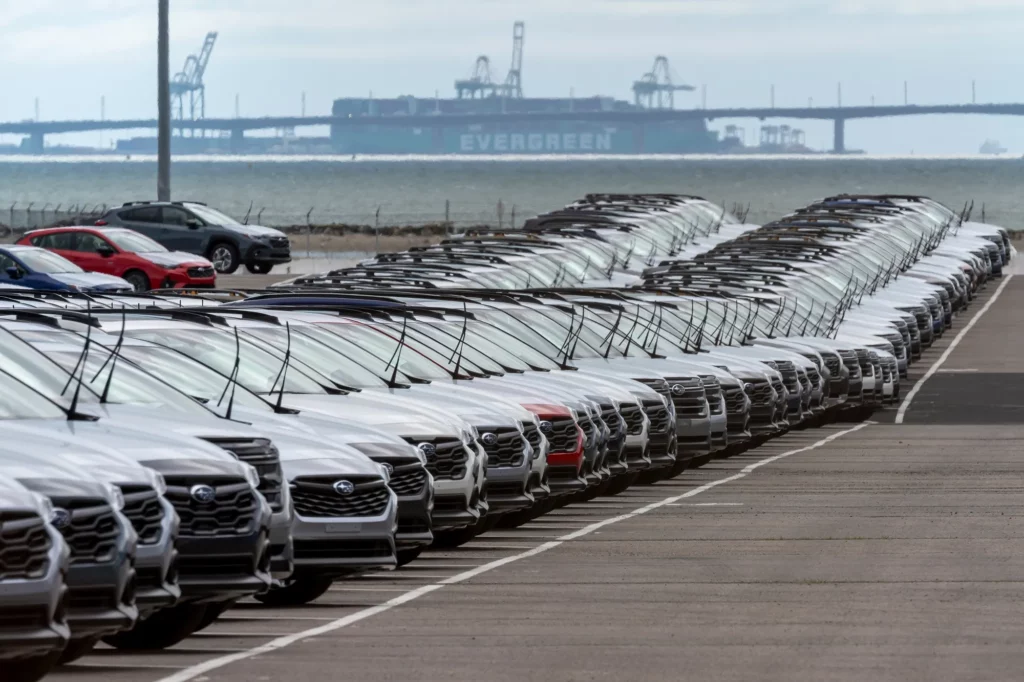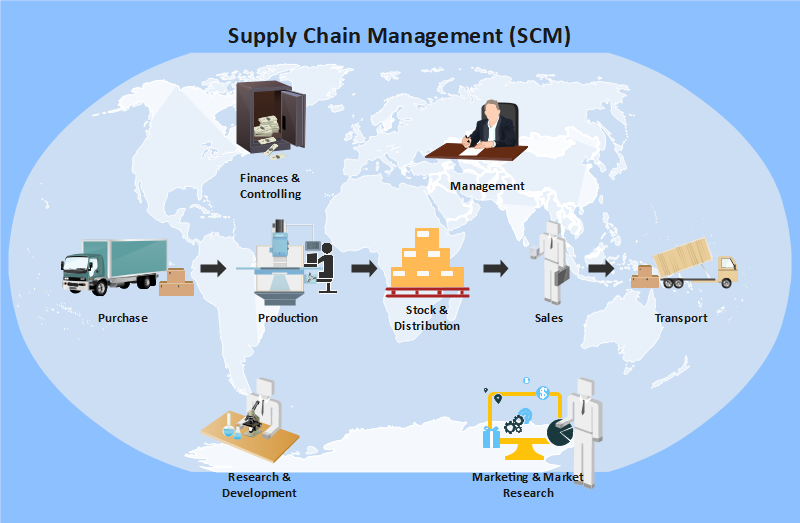
Trump to Announce Sweeping Reciprocal Tariffs April 2 as Markets Brace for Global Trade and Economic Disruption
“Liberation Day” or Isolation Day? Trump’s Tariff Blitz Sends Shockwaves Through Global Markets
WASHINGTON — As cherry blossoms bloom in the White House Rose Garden, the economic climate is chilling. At 4 PM on April 2, President Donald Trump is slated to announce a sweeping series of tariffs—dubbed “Liberation Day”—a policy initiative as bold as it is opaque, with consequences that could ripple across the global economy for years to come.
Described as “reciprocal tariffs,” these new duties are designed to mirror the tariffs foreign countries impose on American exports. But with scant detail about specific rates, targeted countries, or the industries most affected, traders, economists, and global leaders are bracing for what some are calling a trade-policy earthquake.
“Markets don’t fear tariffs—they fear uncertainty,” one senior hedge fund strategist noted privately. “And this is uncertainty weaponized.”
Uncertainty Unleashed: Tariffs Without a Playbook
What makes the “Liberation Day” announcement uniquely destabilizing is not just its scale—but its speed. The tariffs will go into effect immediately following Trump’s remarks, confirmed White House Press Secretary Karoline Leavitt late Monday night.
Did you know that tariffs, which are taxes on imported goods, can significantly impact global trade and economies? President Trump has been a strong proponent of tariffs, using them to protect domestic industries and address perceived trade imbalances. His concept of "reciprocal tariffs" aims to mirror the tariffs imposed by other countries on U.S. goods, promoting fairness in trade. However, this approach can lead to higher inflation and disrupt global trade systems. Interestingly, tariffs often hurt more American jobs than they protect and act as a punitive tax on consumers, driving up prices for both foreign and domestic products. Despite these challenges, reciprocal tariffs are seen as a strategy to reduce trade deficits and promote economic growth, though their overall impact remains debated among economists.
Trump has framed the move as a defensive economic strike, telling supporters it’s time for America to stop being “ripped off” by unfair trade deals and weak enforcement. But without a published tariff schedule or clear country-by-country breakdown, the business world is operating in the dark.
“This is like launching a missile without telling your allies where it's going to land,” said an international trade lawyer with clients across Europe and Asia. “It’s not just provocative—it’s structurally reckless.”
Market Meltdown: Volatility Roars Ahead of the Announcement
Financial markets began pricing in panic almost immediately. Major indices posted sharp intraday declines on April 1, driven by widespread selloffs in sectors with high import exposure. Tech, automotive, and consumer goods were especially battered.
“It’s not even funny,” posted one user online. “People are losing so much damn money just waiting for this.”
Another trader chimed in: “We don’t even know who’s being hit or how hard. This feels like economic Russian roulette.”
Analysts note the VIX—Wall Street’s fear gauge—has spiked 22% since last week, with options markets now pricing in sustained turbulence across April and May.
Automobiles in the Crosshairs: 25% Duty Starts April 3
While many details remain elusive, one fact is confirmed: a 25% tariff on all imported automobiles will go into effect on April 3.

This single measure could reshape an industry already teetering from supply chain disruptions and high interest rates. U.S. consumers could soon face dramatically higher sticker prices, while foreign automakers may scale back investment in American plants.
An executive at a major European automaker, speaking anonymously, described the measure as a “direct assault” on global integration. “We’ve spent decades building binational supply chains. This breaks that overnight.”
Allies or Adversaries? Retaliation Looms from Global Partners
Even before the official unveiling, foreign governments began mobilizing responses. Diplomats from Canada, Mexico, South Korea, and the European Union have already sought clarification or exemptions. Early indicators suggest China and Japan are preparing retaliatory tariffs of their own.
“These tariffs don’t live in isolation,” warned one Asia-based market strategist. “They spark cycles—hit and counter-hit. And this administration appears to be inviting that chaos.”
Indeed, insiders suggest that some U.S. trading partners are exploring coordinated countermeasures, potentially involving agricultural goods, semiconductors, and aerospace parts—key exports that could hurt politically strategic regions in the U.S.
Winners and Losers: Who Gains, Who Suffers?
Multinationals Under Siege
Companies with complex international supply chains—especially in technology and heavy manufacturing—are among the most exposed. Any increase in import costs could disrupt margins, delay production, or trigger layoffs.

“There’s no time to reroute supply chains in days,” said a sourcing director at a Fortune 500 electronics firm. “We’re looking at lost quarters, maybe years.”
Domestic Manufacturers: Short-Term Sugar, Long-Term Squeeze
Some domestic firms may benefit from reduced foreign competition, but only in the short run. If retaliatory tariffs erode access to overseas markets or inflate the cost of raw materials, these same firms could find themselves squeezed from both ends.
“It’s a mirage,” said one Midwest-based factory owner. “We might sell more locally this quarter, but what happens when our steel costs go up 40% and our foreign orders vanish?”
Consumers Pay the Price
With imports taxed and domestic substitutes limited, the cost burden ultimately shifts to American households. From cars to consumer electronics to groceries, analysts expect price hikes across sectors.
Table: Projected Impact of New Tariffs on U.S. Consumer Prices Across Various Sectors
| Sector | Impact | Additional Notes |
|---|---|---|
| Automotive Industry | Price increase: $3,000 for U.S.-manufactured vehicles, up to $6,000 for imported vehicles. | Production output may drop by 30%, reducing daily production by ~20,000 vehicles. |
| Steel and Aluminum | Higher costs for goods like canned drinks and vehicles due to 25% tariffs on imports. | Domestic prices for steel and aluminum have already increased in anticipation. |
| Consumer Goods | Price hikes in electronics, clothing, and food. | Lower-income households face reduced purchasing power; annual cost increase: $3,400–$4,200. |
| Inflationary Impact | Core inflation could spike to 3.5% by end of 2025. | Tariffs may add 0.5–8 percentage points to core PCE inflation depending on markup adjustments. |
| GDP Growth | Projected slowdown by 0.6% in 2025. | Long-term economic losses estimated at $80–110 billion annually. |
| Employment | Job growth in steel manufacturing; layoffs in sectors reliant on imports. | Production capacity may be reduced in affected industries. |
| Recession Risk | Increased probability of recession (35–40%) within the next year. | Driven by reduced consumer spending and retaliatory trade measures. |
| This table summarizes the anticipated economic and consumer impacts of recently announced tariffs across key sectors in the U.S. economy. |
“This is inflation by design,” said a former Federal Reserve researcher. “And if wages don’t keep pace, disposable incomes will shrink.”
Strategic Realignment: The New Trade War Economy
Beyond immediate costs, Trump’s tariffs may catalyze structural shifts in global economics:
Supply Chains Rewritten
Some firms may accelerate nearshoring or reshoring, opting to produce closer to home. But this pivot comes at a premium—U.S. labor and energy costs far exceed those in Southeast Asia or Latin America.
“We’ll bring jobs back,” one logistics expert said, “but at what price? That T-shirt might cost $12 instead of $5.”
Rise of Parallel Trade Blocs
As U.S. policy turns inward, there is increasing chatter of new alliances forming elsewhere. Early whispers suggest that Asia-Pacific economies may double down on regional trade integration—perhaps even excluding the U.S.
“You can’t isolate yourself and expect to lead,” an EU economic adviser told reporters. “The world is watching—and reorganizing.”
Investors Rebalance: From Risk-On to Risk-Off
Investment managers are already shifting portfolios in anticipation of deeper fragmentation. Emerging market funds are bleeding capital, while flows into gold, treasuries, and non-U.S. infrastructure are rising.
Did you know that in 2025, global investment flows are shifting significantly, with capital moving away from emerging markets toward traditional safe-haven assets like gold and U.S. Treasuries? This shift is driven by heightened geopolitical tensions, inflation risks, and market volatility. Emerging markets face challenges due to capital outflows, particularly in countries like India, which experienced significant outflows in February 2025, while others like China and Brazil saw inflows. The strengthening U.S. dollar and rising bond yields have exacerbated these outflows, making emerging sovereigns more vulnerable to financial shocks. Meanwhile, gold has solidified its position as a leading safe-haven asset, offering stability against economic and geopolitical uncertainties.
“Trade friction isn’t noise—it’s a secular headwind,” said one equity strategist. “We’re de-risking and rotating out of exposed sectors. Defensive plays are back in vogue.”
The automotive, tech, and consumer discretionary sectors are likely to suffer prolonged underperformance. Meanwhile, firms positioned to serve purely domestic demand—or those insulated from cross-border logistics—may emerge as relative havens.
A Moment of Reckoning, or a Miscalculation in the Making?
With little transparency, enormous geopolitical stakes, and immediate financial repercussions, Trump’s “Liberation Day” tariffs may come to define a new era of U.S. economic nationalism—or spark a backlash that reshapes the global order in unintended ways.
Whether this bold pivot will ultimately “liberate” American industry or entangle it in deeper isolation remains to be seen. But for now, the only certainty is that investors, businesses, and foreign governments are navigating a storm—and the eye is just beginning to form.
“Tariffs aren’t policy—they’re shock therapy,” concluded one institutional trader. “But the patient wasn’t dying. Now we’ll see if it survives the cure.”